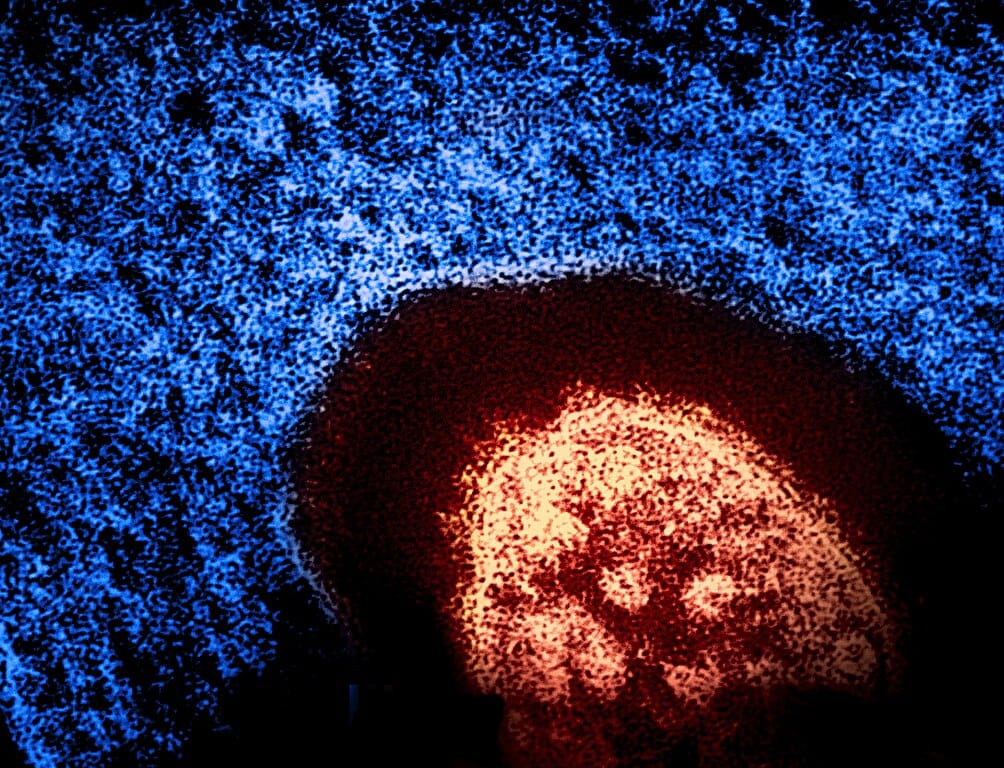measles

Measles is a potentially fatal, but vaccine-preventable, disease caused by a Morbillivirus, and it is one of the most highly contagious diseases that infect humans. The disease, once rendered rare in the industrialized world, has made a comeback in recent years, largely due to low rates of vaccination. The disease is considered by many to be a “childhood illness” and more of a nuisance than a threat, but measles commonly leads to serious and permanent, even fatal, complications. But the name measles is an odd one with an innocuous connotation that belies how dangerous the disease really is. Where does the name measles come from?
(The name measles is also sometimes applied to the parasitical disease cysticercocsis, which primarily infects pigs but which can infect humans, as well. That disease, which can cause cysts on the skin that resemble those caused by Morbillivirus, hence both names, is caused by a tapeworm and is biologically unrelated.)
Measles comes from a Germanic root, but its exact route into English is uncertain. It appears by the early fourteenth century and is either a borrowing of the Middle Dutch masels, the Middle Low German maselen, or both. Both of these Germanic etymons are plural, just like the English word. The Old Saxon masala is a blood blister, and the disease’s name comes from the red pustules that appear on the skin during the course of the disease.
The first known use of the word in English is from before 1325 in Walter of Bibbesworth’s Tretiz. Bibbesworth, an Essex knight, wrote the treatise to instruct English speakers in Anglo-Norman French vocabulary. He glosses the Anglo-Norman word rugeroles with maseles (or maselinges depending on which manuscript you consult). Rugerole literally means “red poppy” and was used to refer to the red rash caused by a sexually transmitted infection (which one or ones is uncertain). And in early use the word was used to refer to any disease that caused red spots.
The use of measles to refer to a sexually transmitted infection also gave us the now obsolete mesel, originally referring to leprosy or other skin diseases and later extended to those who were generally considered repellent. This word also first appears in English around the year 1300, but it is of a very different origin, coming from the Anglo-Norman mesel, meaning “leprous, leper, repellent person” and ultimately from the Latin misellus, meaning “poor, wretched.” At the time, leprosy was thought to result from sinful sexual behavior. These Latin and Anglo-Norman words undoubtedly had an influence on the spelling and pronunciation of measles, but they’re not the direct origin of the modern English word.
The form maselinges in one copy of Bibbesworth’s treatise can still be found in the form measlings in certain regions of Britain. This form comes to English via Scandinavia (compare the Swedish mässlingen, the Danish mæslinger, and the Icelandic mislingar—all plural forms), but this Scandinavian form comes from the Dutch/Low German word, just like the more common measles.
Sources:
Anglo-Norman Dictionary, AND2 Phase5 (R–S), 2018–21, s.v. [rugeole], n., rugerole, n., rugerolé, n.; AND2 Phase 3 (I/Y–M), 2008–12, mesel1, n.
Middle English Dictionary, 4 March 2025, s.v. masel, n.
Oxford English Dictionary Online, March 2001, s.v. measles, n., measlings, n., measle, adj., mesel, adj. & n., measle, v.
Sayers, William, “A Popular View of Sexually Transmitted Disease in Late Thirteenth-Century Britain.” Mediaevistik, vol. 23, 2010, 187–96 at 192–94. JSTOR.
Image credit: U.S. Centers for Disease Control (CDC) and National Institute of Allergy and Infectious Diseases (NIAID), 2024. Wikimedia Commons. Public domain photo.